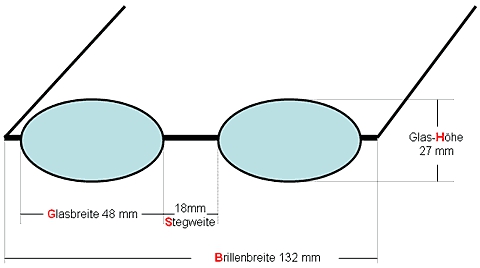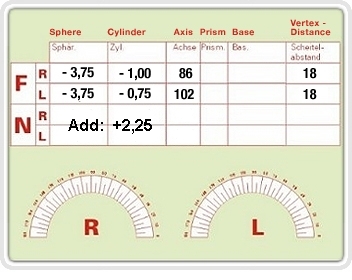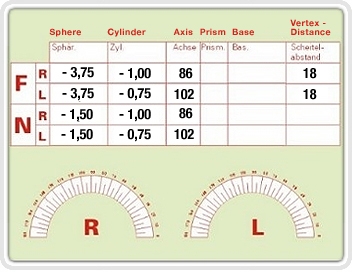All products in your shopping cart will then be displayed. They can then be edited. The number of pieces can be changed or products can be deleted. After a change in the shopping cart, please press the refresh button! Otherwise the made changes are not taken over completely. On this page you can also enter voucher codes. Afterwards please click on continue to next step
You then have the possibility to open a new customer account or, if you are already registered, to enter your log-in data. However, it is also possible to continue without registering. You will then only need to enter your address details and can immediately complete your order. Please note: Once you have registered, it is no longer possible to place an order under the same email address without registering !
After entering your address data and a possibly different delivery address, you only have to choose the desired payment method. Before the order process is finished, you can check your data and change them if necessary.
Correction of input errors
Input errors can be corrected at any time during the ordering process.
Simply click on the order step to be changed in the overview line. All input data can then be changed.
The order is only finally sent after clicking on Order with payment obligation in the last order step and can no longer be changed online.
>> Back
The shop system allows you to search by product name, by product group, by item number as well as by the total range offered by each manufacturer.
In addition, you have the possibility to search for contact lenses according to certain material properties.
Enter for example biocompatible or silicone.
All lens types made of biocompatible materials or silicone hydrogel material will then be displayed.
Or enter Ocufilcon. ( You can find the material name on the lens package )
All lenses made from this material will then be displayed
.
We grant a statutory right of return within 14 days of delivery.
Please note that unsealed or damaged goods cannot be returned.
In case of wrong delivery, please call us before returning the goods. Phone +49-711-48 68 68
We will then try to send the correct goods as quickly as possible. As a rule, we enclose stamps or a "freeway parcel stamp" with the replacement delivery for the free return of the incorrectly delivered products.
For returns, please always fill out the returns slip that is included with each order.
Products made especially for you, such as annual lenses, hard contact lenses or other custom-made contact lenses, can only be returned if there are obvious quality defects.
For all returns free of charge according to the right of withdrawal, you will receive a parcel value stamp from us, with which you can return the goods free of charge from any DHL acceptance point (post office or DHL service point) to us. Please avoid unfree returns.
You can request a free parcel stamp by calling +49-711-486868.
You can also print out the parcel stamp directly online. To do so, please click on this link and enter your customer number and address details. You can then save the form as a PDF and print it out. You then only need to stick the printout on your parcel and hand it in at a DHL acceptance point of your choice.
BC Value:
The radius of curvature (BC, BK, ro) indicates the curvature of the inner surface of the contact lens in mm. The larger this value, the flatter the lens. The radius of curvature of the lens depends on the curvature of the corneal surface. However, the fit also depends on the diameter and on the strength of the lens material.
Power:
The power (SPH, PWR, P., DPT, F`v , D) indicates the optical effect of your contact lenses in diopters (D, dpt). Please pay attention to the sign ( minus or plus ).
Cylinder + Axis:
For toric contact lenses for astigmatism, the cylinder (Cyl., Zyl.) and the axis (Axis, AX, A, T) are also indicated with values between 0 and 180°.
For some lens types, the cylinder value and axis are only separated by an "x" ( 1.25x090 ). This then means that the cylinder value is -1.75 and the axis value is 90.
DIA:
The diameter (DIA, DM, øT) indicates the size of the contact lens in millimeters.
Addition:
In the case of multifocal contact lenses for presbyopia, some lens types also indicate the addition (Add).
The addition can be indicated with a numerical value such as +1.50 or with a word such as "low" or "high".
Eccentricity
:The
eccentricity indicates the degree of edge flattening for hard contact lenses with an elliptical back surface shape
.
LOT number:The LOT number
indicates in
which production batch a certain packaging unit was produced
.
It is used for quality control purposes and does not have to be specified when placing an order.
Material:
Indicates the official material designation. It must be indicated on each contact lens package and can be used to identify a lens sold under different brand names. You can enter the material name in the "search box" at the top left. All lens types made from that material will then be listed.
Material Type:
This field appears if the lens material has special properties.
E.g.:
HEMA for the classic, first soft lens material, which was only slightly gas permeable but quite comfortableMMA
for material with medium water content and medium DK value (not biocompatible)
MMA/VP material with high water content and relatively high gas permeability (not biocompatible)
Biocompatible
for
particularly compatible materials, which are not perceived by the body as foreign and are therefore better tolerated, form fewer deposits and dry out less quickly
.
Silicone hydrogel for the latest generation of materials with low water content and yet enormous acid permeability. Some of these lenses ( DK > 100 ) can be worn continuously for several days after consultation with the fitter, as they hardly tend to dry out and supply the eye with sufficient oxygen even when the eyelids are closed.
Water content:
Indicates the percentage of water in a soft contact lens. In general, the higher the water content of a contact lens, the better the oxygen permeability of the lens material. Contact lenses with good oxygen permeability (Dk value) are therefore particularly suitable for longer periods of wear. Contact lenses with a high water content also have disadvantages. They are usually not as stable as lenses with a low water content and are more prone to deposits.
In the case of dry eyes, contact lenses with a high water content can cause wearing problems, as they absorb the natural water supply (tear film) of the eyes like a "sponge" and can "dry out" the eyes.
In such cases, lenses made of so-called bionic (biocompatible) material with medium water retention and high water binding capacity are the best solution.
The new materials with silicone content are even more effective. Despite their very low water content, they have a much higher oxygen permeability than conventional lens materials.
DK value (DK/T value)
This numerical value indicates the oxygen permeability of a lens material independent of the centre thickness (DK value)
.
The higher the value, the greater the oxygen permeability. Often the manufacturers give the so-called DK/T value, which also takes into account the center thickness of the lens. Thus, the DK/T value of a lens made of the same material is greater with a smaller central thickness. Do not be confused by this numerical value. In practice, the order of magnitude is more important than the exact number. Here is a rough overview:
DK (DK/T) > 20 low oxygen permeability (HEMA material)DK (DK/T
) = 20-50 medium oxygen permeability (biocompatible materials)DK (DK/T) >
60-150 high to highest oxygen permeability (silicone hydrogel material)
Color type:
Color intensifying = the eye color cannot be changed, but only intensified. This lens type is especially suitable for light eyes. Brown eyes cannot be changed. A shading of the pupil takes place only to a small extent.
Color-changing = the color layer of the lens covers the iris to a large extent. These lenses can also change the colour of dark eyes. This type of lens is not suitable for driving at night because of the partial shading of the pupil !
Modulus:
The modulus (material elasticity) is a measure of the stiffness or elasticity of a material
.
In the case of contact lenses, it is a measure of how well the lens fits the eye and how comfortable it is to wear. The lower the modulus value, the softer the material. The modulus value is usually only given for silicone hydrogel lenses. An extremely high oxygen transmissibility (DK value > 120) implies a higher modulus, which may limit comfort when switching from a softer material during the first few days of wear.
Storage Range:
Indicates the strength range within which we have a concat lens in stock. The delivery time is then correspondingly shorter than if we first have to request the lens from the manufacturer.
Eyeglass Framing:

Example of a prescription
F = Distance ( decisive values for distance glasses )
N
= Near ( decisive
values for reading glasses )
.
The column sphere indicates the diopter value of the lens.
Minus(-) for myopia and plus(+) for hyperopia. If no sign is given, it always means plus(+).
In the column cylinder the value of the corneal curvature ( astigmatism ) is indicated. If there is no astigmatism, this field remains empty in the prescription. In this case, please select "0.00 no cylinder" in the order form.
The Axis column indicates the position of the astigmatism in degrees.
If there is no astigmatism, this field also remains empty in the prescription. In this case, please enter the value " no axis " in the order form.
The vertex distance indicates the distance of the lens from the cornea. It does not need to be specified in an order.
If values are entered in the Prism field, you cannot order online !
In this case you have an angle defect. In these, more complicated cases, you should contact your local optician.
The ADD (Addition) field only appears for multifocal lenses (progressive lenses). Enter the difference between the spherical values of distance and near here.
It is practically always the same for the right and left eye. Often the addition is also indicated on the prescription (see second prescription example below).
The PD (pupillary distance) indicates the distance of the pupil from the center of the root of the nose in millimeters.
It is not usually given in an eyeglass prescription. However, you can often find it in spectacle passports.
The values are either given separately for the right and left eye (e.g. 32.5-31.5) or as total PD (distance between the two pupil centres in millimetres).
You can find a printable PD scale here
.
Previous example in a different notation:

Often the values for near are not given individually, but only as a near addition (addition) to the distance value.
To order reading glasses, the addition must be added to the sphere of the distance value. Cylinder and axis do not change.
Example:
Near value right:
Sphere: = -3.75 + 2 .25 = -1.50Cylinder=
-1.00Axis
= 86
Close-up value left:
Sphere: = -3.75 + 2.25 =-1.50Cylinder
=-0.75Axis
=102
With contact lenses, the delivery time is often strength dependent.
Common values of daily and monthly lenses we have in stock in many cases.
The stock range indicates within which strength range we have the lens type in stock. The delivery time is then 1-3 working days.
Lenses outside the indicated range have a delivery time of approx. 3-6 working days.
The indicated delivery times, can deviate in individual cases also once. If it takes considerably longer than indicated, inform by email.
Please call us in very urgent cases, whether the desired lens is also guaranteed to be available. (Tel. 0711-486868)
Rarely required values such as high MINUS values or PLUS values as well as annual lenses, coloured lenses, toric lenses, multifocal lenses, hard lenses and lenses outside the stock range usually have a delivery time of 3 - 6 days. In exceptional cases, custom lenses may require up to 14 days.


 Service / Help
Service / Help
 Contact
Contact
 0711 486868
0711 486868




 Quick
Quick





